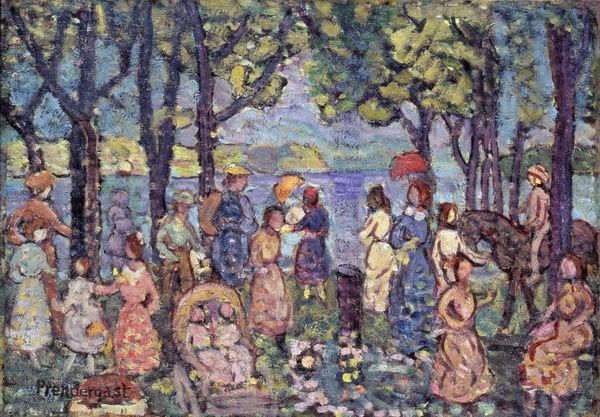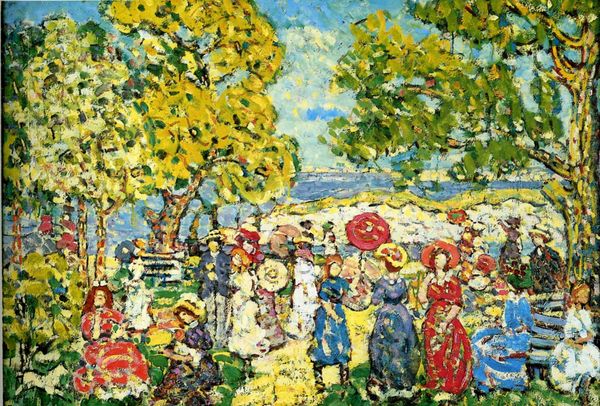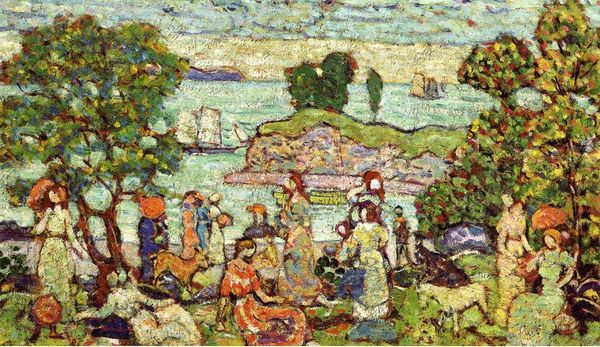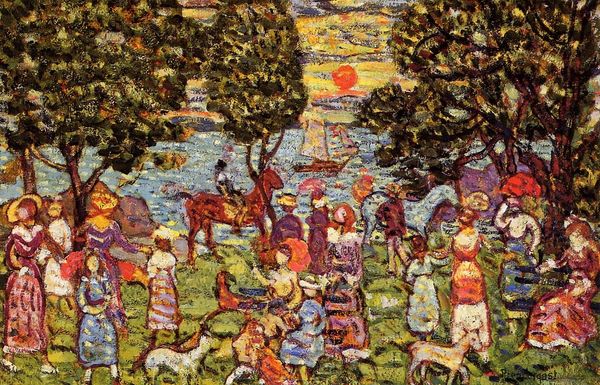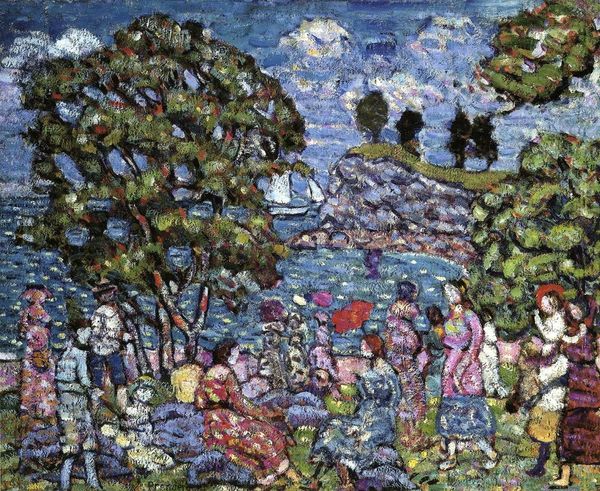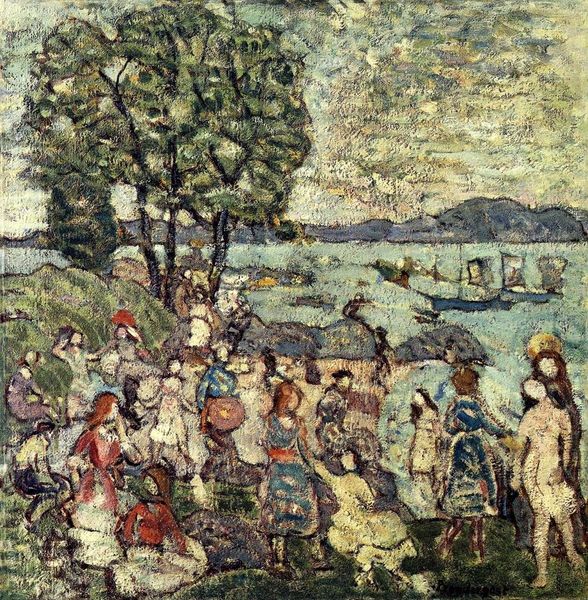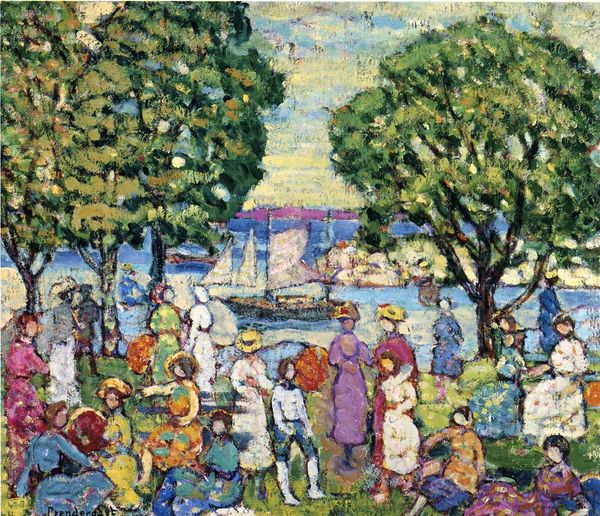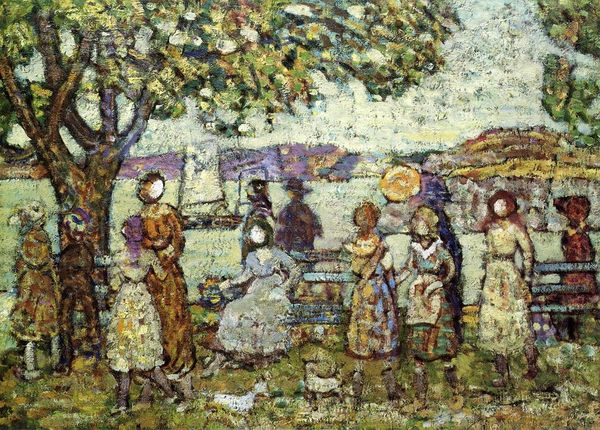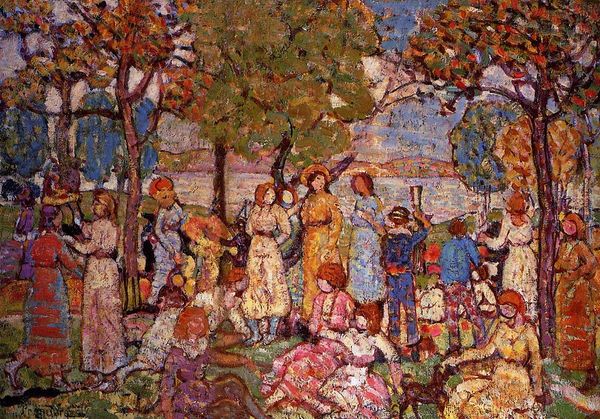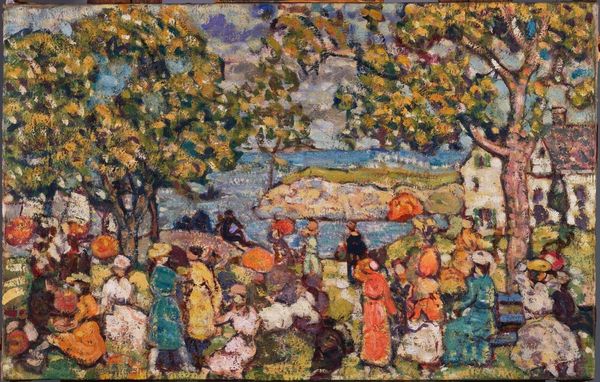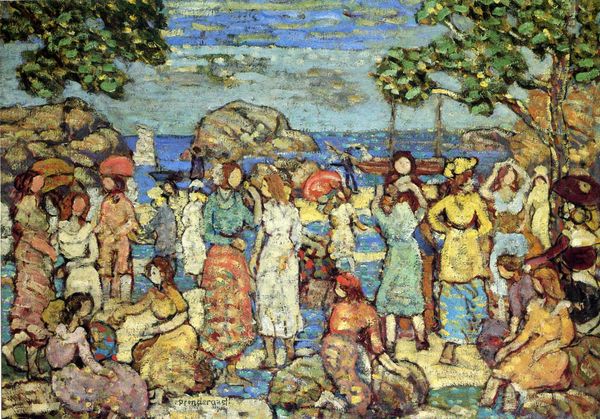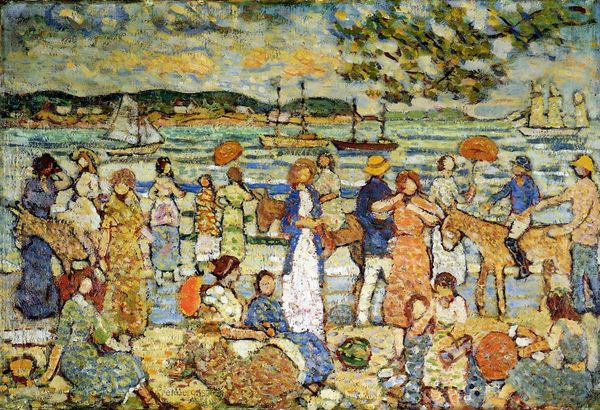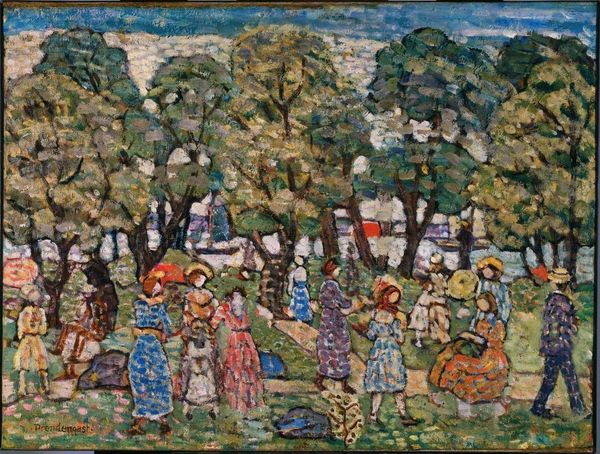
Dimensions: 66.04 x 84.14 cm
Copyright: Public domain
Curator: Maurice Prendergast's "On the Beach No. 3," painted in 1915, showcases his distinctive, lively approach to oil on canvas, currently residing here at the Cleveland Museum of Art. Editor: It immediately strikes me as a modern-day Arcadian scene, a vibrant, if slightly chaotic, rendering of leisure. The dappled sunlight and bright colours evoke a sense of joyful abandon. Curator: Prendergast was deeply invested in portraying the public sphere and the evolution of leisure activities amongst various classes. He wasn’t just capturing a beach scene, but also commenting on the democratizing effect of such spaces in the early 20th century. Editor: Absolutely. There is a mosaic of forms in his choice of rendering of the groups. He fragments the figures and landscape into these almost staccato-like dots, a style some call "pointillist," giving each form the symbol of communal energy and of sharing resources and good humor. Curator: It is fascinating how he merged Impressionistic techniques with a proto-Fauvist boldness. The scene comes alive with color but also, because he worked “en plein air” that immediacy is palpable, allowing him to really register those fleeting effects of light on water and figures. His plein air painting and process were very aligned with the impressionists’ ideas of capturing life’s essence as an important value. Editor: Look how those boat sails in the background become almost abstract shapes, merging seamlessly with the sea and sky. He transformed mundane observation of everyday life into almost pure decoration. Those silhouettes offer so many cultural references of this seaside. Curator: There's a tension between the detailed observation of contemporary life, in particular the groups on the beach enjoying recreation, and the almost decorative, flattened space of the composition. And you see that push-and-pull throughout his practice. Prendergast took what he needed from the moment. Editor: It is this tension that really gives the painting its character. We feel the joy of that day. His method leaves such an emotional effect from this piece that has lasted through generations. Curator: The politics of pleasure, if you will, were indeed brilliantly painted here. Editor: Yes. Thank you. The canvas stays in the heart like the emotion of joy that lives there, too.
Comments
No comments
Be the first to comment and join the conversation on the ultimate creative platform.
